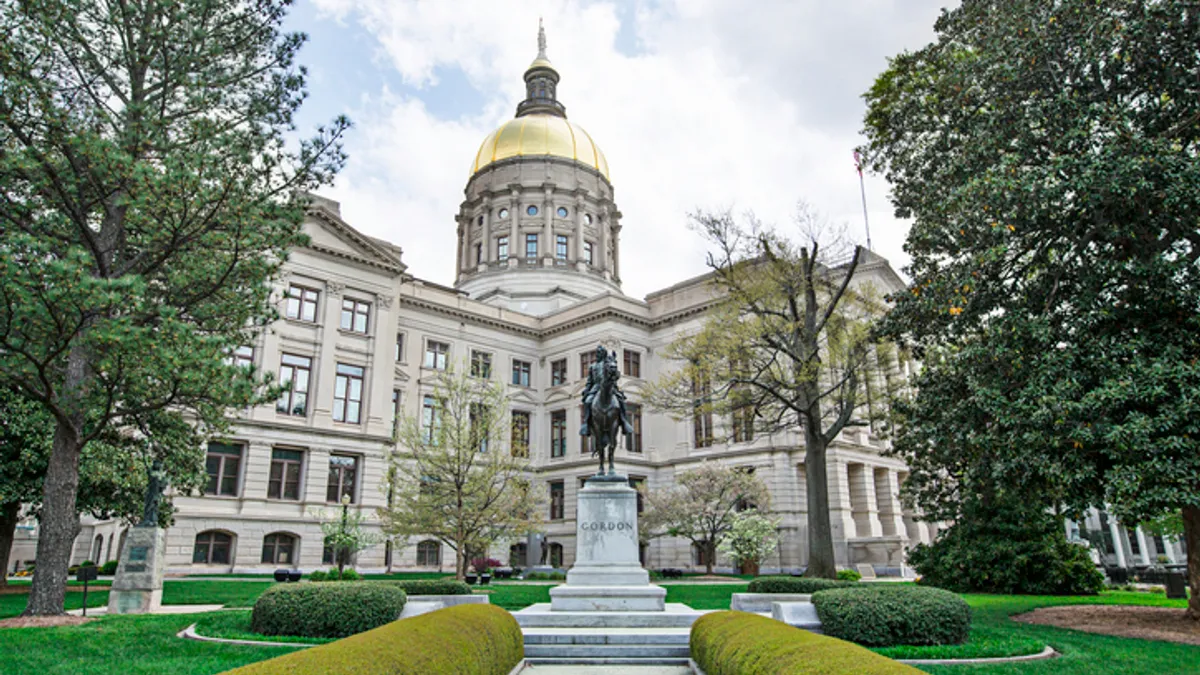Dive Brief:
- A private school voucher program in Georgia has begun accepting applications from private schools and will begin doing so for students early next year, according to a website developed for the newly created program.
- Beginning in the 2025-26 school year, the Georgia Promise Scholarship will provide $6,500 per eligible student. Students can qualify if they live in an attendance zone with a low-performing school, as determined by the Governor's Office of Student Achievement, and meet certain other conditions.
- Georgia's expansion of using public funds for nonpublic education is part of a growing trend across the country in the last few years to offer more private school choices to families. However, voters in some states on Nov. 5 rejected proposals to broaden these programs.
Dive Insight:
The Georgia Promise Scholarship was passed by the state General Assembly earlier this year. According to pro-school choice organization EdChoice, it joins two other private school choice programs in the state.
Eligible families can use the funds for private school tuition and fees, required textbooks, tutoring services, curriculum, physician/therapist services, transportation services and other approved expenses. Participating students must have attended a public school in the 2024-25 school year or be entering kindergarten for the 2025-26 school year.
Public school students will not be eligible to use the scholarship funding for tutoring.
Participating schools must be located in Georgia and:
* Be accredited.
* Be in operation for at least a year or submit financial documents.
* Comply with federal antidiscrimination policies.
* Test students annually and report assessment data.
According to the Georgia Center for Opportunity, a nonprofit that supports access to education for all, funding for the scholarship program is capped at 1% of public school funding and is expected to serve an estimated 21,000-22,000 students at most.
Research from EdChoice published earlier this year found that private school choice enrollment nationwide exceeded 1 million students for the first time. However, only 2% of eligible students are currently participating in these programs. Public school enrollment was about 49.6 million in 2022, according to the U.S. Department of Education's National Center for Education Statistics.
On Wednesday, Public Funds Public Schools, a nonprofit that supports keeping taxpayer dollars for public education, launched an interactive tool looking at public and private school populations.
“The state data clearly shows that private schools are often highly segregated by race and socioeconomic status,” said Nicole Ciullo, associate director of policy and development at Education Law Center, in a statement. “When public money is being used to fund private education through voucher programs, it’s important to know what that money is paying to support.”













